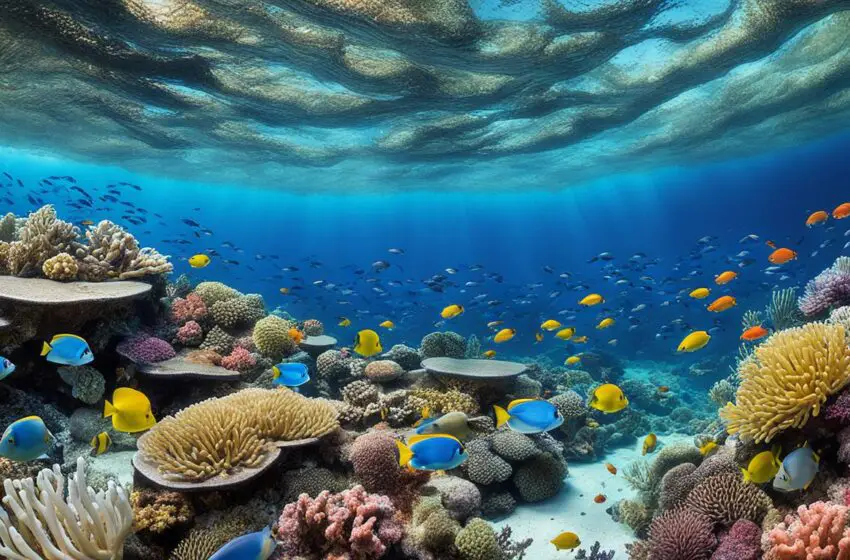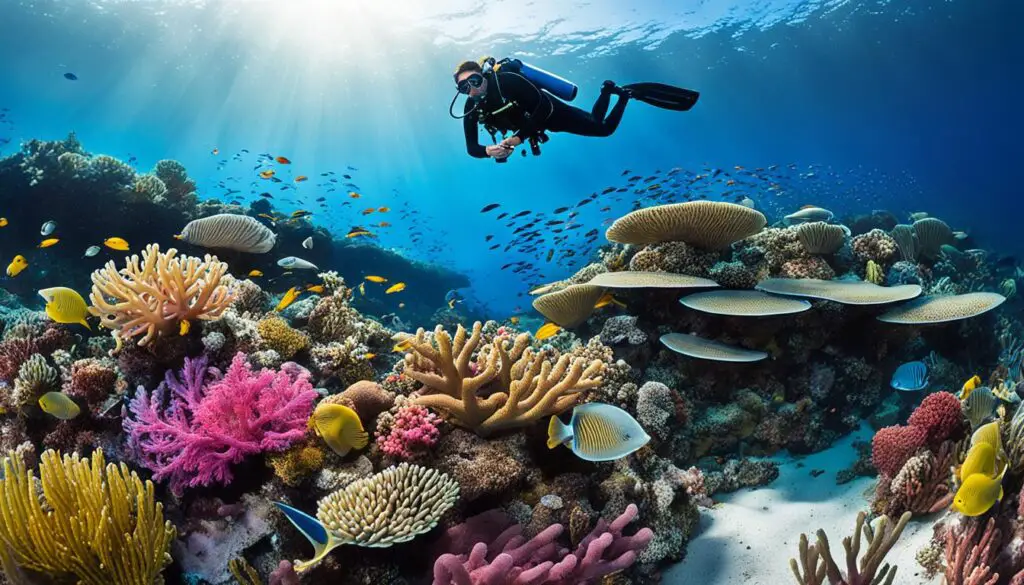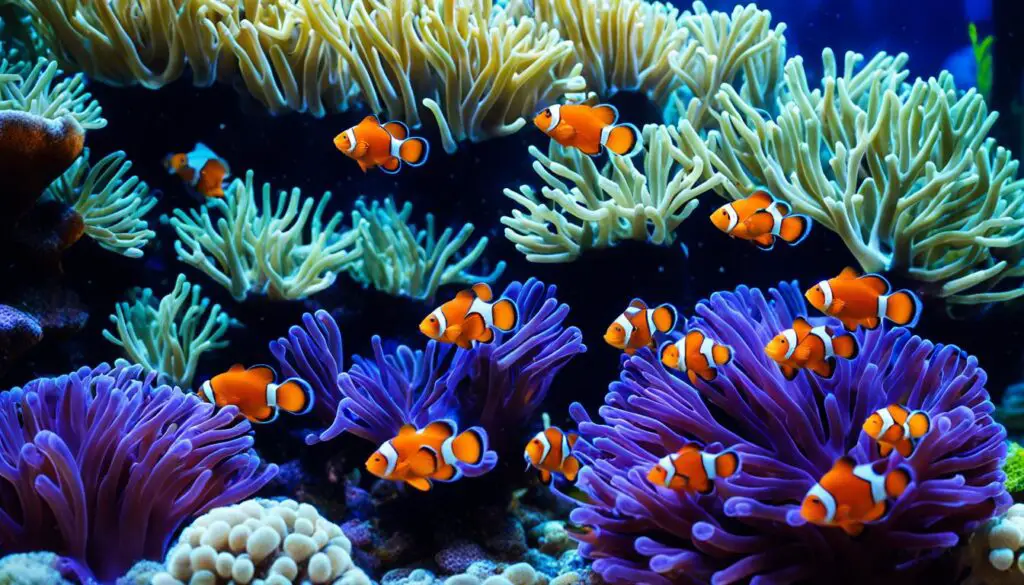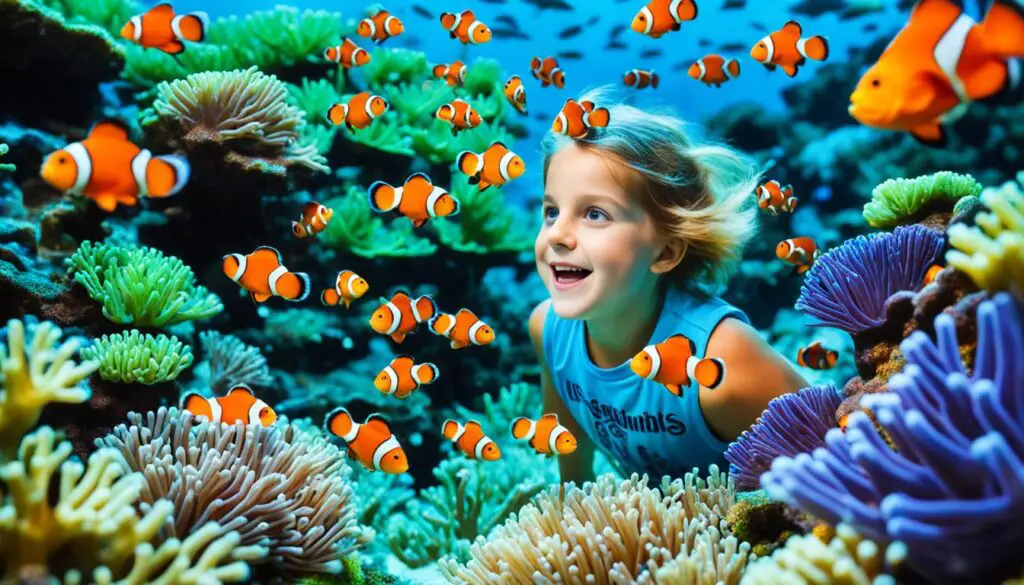Marine Life Conservation: Guardians of the Sea: Marine Life Conservation Strategies Unveiled!

As someone who fights for the sea, I’m devoted to saving marine life. I want to make sure our oceans stay healthy for a long time. Saving marine life means protecting the many different ecosystems under the sea. These include the creatures, plants, and habitats that make up the ocean world.
Oceans face big dangers like overfishing, pollution, and climate change. These problems upset the natural balance of the ocean. They can harm the variety of life in the sea.
To help the ocean, we need smart plans. Establishing marine protected areas (MPAs) is one such plan. MPAs are special zones in the sea. They let sea life recover and grow by keeping human activities in check.
MPAs make up safe zones where fish, plants, and animals can thrive. Putting a limit on fishing and harmful practices helps these areas heal. The result is a better chance for ocean life to flourish.
But helping the ocean is about more than just MPAs. It also means fixing habitats, managing fishing better, stopping pollution, and fighting climate change. By fixing important marine places like mangroves and coral reefs, life in the ocean gets a boost.
Managing fishing in a smart way is key. It means setting fishing rules to keep fish populations healthy. This ensures there will always be fish for the future.
Dealing with pollution is a big part of ocean care, too. We must find ways to stop harmful waste from getting into the sea. This includes plastic, chemicals, and sewage. This helps keep the ocean clean and safe for its residents.
But that’s not all. It’s also important to tackle climate change. This big issue affects the whole planet, including the ocean. By fighting climate change, we protect the homes and lives of sea creatures.
Together, we can protect the sea. With good plans and everyone’s help, we can keep the ocean alive. This will make sure future generations can enjoy the beauty of our oceans.
Key Takeaways:
- Marine life conservation is vital for protecting the rich biodiversity of our oceans.
- Marine protected areas (MPAs) play a crucial role in regulating human activities and allowing marine species to recover and thrive.
- Restoring marine habitats, implementing sustainable fisheries management, combating pollution, and addressing climate change are essential components of marine life conservation.
- MPAs need to be properly managed, with adequate size, full protection, and strict enforcement to be effective in safeguarding marine biodiversity.
- Collective efforts are necessary to be the guardians of the sea and ensure the long-term sustainability of our oceans.
Marine Protected Areas: Safeguarding Marine Biodiversity
Marine protected areas (MPAs) are key to saving marine life. They are special areas in the ocean with strict rules. These rules protect the natural world by banning harmful activities like fishing and drilling.
These areas help fish and other sea life grow bigger and have more babies. This makes the ocean healthier. If these areas are big enough and well managed, they can keep the ocean full of life.
MPAs are like safe zones for sea creatures. They protect important places like where fish live and have babies. Doing this helps keep our oceans healthy and full of life.
“MPAs are a cornerstone strategy in marine life conservation, providing safe havens that support the recovery of ecosystems and the preservation of marine biodiversity.”
But, making MPAs work well takes a lot of effort. We need big MPAs that protect lots of different areas. And we have to make sure no one breaks the rules.
To really save our seas, MPAs must be part of a bigger plan. This plan must fight overfishing, pollution, and climate change. And everyone needs to work together to protect our oceans.
Safeguarding Marine Biodiversity: A Snapshot of MPAs
| Milestone | Location | Established |
|---|---|---|
| Great Barrier Reef Marine Park | Australia | 1975 |
| Papahānaumokuākea Marine National Monument | Hawaii, United States | 2006 |
| Galapagos Marine Reserve | Ecuador | 1998 |
| Fish Rock Cave | Australia | 1983 |

These examples show there are many MPAs worldwide. Each one protects special parts of the ocean. By caring for and making more MPAs, we can keep the ocean full of life for our children and grandchildren.
Effective Strategies for Marine Life Conservation
Other than Marine Protected Areas, there are many good ways to save ocean life. One such way is fixing habitats that have been hurt. By replanting mangroves and rebuilding coral with special techniques, more marine life can be supported. It also helps protect shores and fights climate change by storing carbon.
Managing fishing in smart ways is also key. This means setting limits on how many fish can be caught. It also involves using fishing tools that only catch certain kinds of fish. Some areas might close to fishing for a while to let fish breed. This keeps fish populations healthy and stops some from going extinct.
Stopping pollution is crucial too. Things like plastics and sewage can badly harm sea animals. We can lessen this harm by better handling our trash, making rules against polluting, and teaching people about how to help. These actions will make our oceans cleaner and safer for animals.
Dealing with climate change is also very important for marine life. Warmer seas and more acidic waters are dangerous for ocean life. To help, we should cut down on things that make the earth hotter. And we must protect important ocean areas, like seagrass meadows, to give animals a better chance against climate change.
FAQ
What is marine life conservation?
Marine life conservation is the work to protect oceans’ life and places where they live. It includes stopping overfishing, fighting pollution, and saving habitats. This helps keep ocean life around for the long term.
Why is marine life conservation important?
It’s key because many things threaten our oceans and the creatures in them. Protecting marine life helps keep the ocean’s diversity alive. It also maintains the health of ocean ecosystems and ensures we have enough fish and resources from the sea.
What are marine protected areas (MPAs)?
Marine protected areas are parts of the ocean where activities like fishing and drilling are controlled. They allow marine life to grow without human interference. These areas help fish grow bigger and increase the variety of sea life.
How do marine protected areas contribute to marine life conservation?
MPAs are vital because they give sea creatures places to live safely. By controlling what people do there, the habitats and wildlife can bounce back. They help in protecting ocean life and increasing the amount of fish.
What are the characteristics of effective marine protected areas?
Effective MPAs are large and cover different ocean environments. They should be off-limits for fishing to work well. Proper management and protection make them key in saving marine life.
What are some other strategies for marine life conservation?
Besides MPAs, we can help oceans by fixing damaged areas, fishing in a smart way, and cutting pollution. Tackling climate change is also important. These actions are crucial for keeping the sea and its life healthy.
Source Links
- https://medium.com/global-climate-solutions/revitalizing-marine-biodiversity-strategies-and-success-stories-in-ocean-conservation-f9a717e8e40c
- https://en.wikipedia.org/wiki/Marine_conservation
- https://marine-conservation.org/on-the-tide/announcing-the-new-updated-marine-protection-atlas-an-immersive-visual-tool-for-exploring-ocean-conservation/



